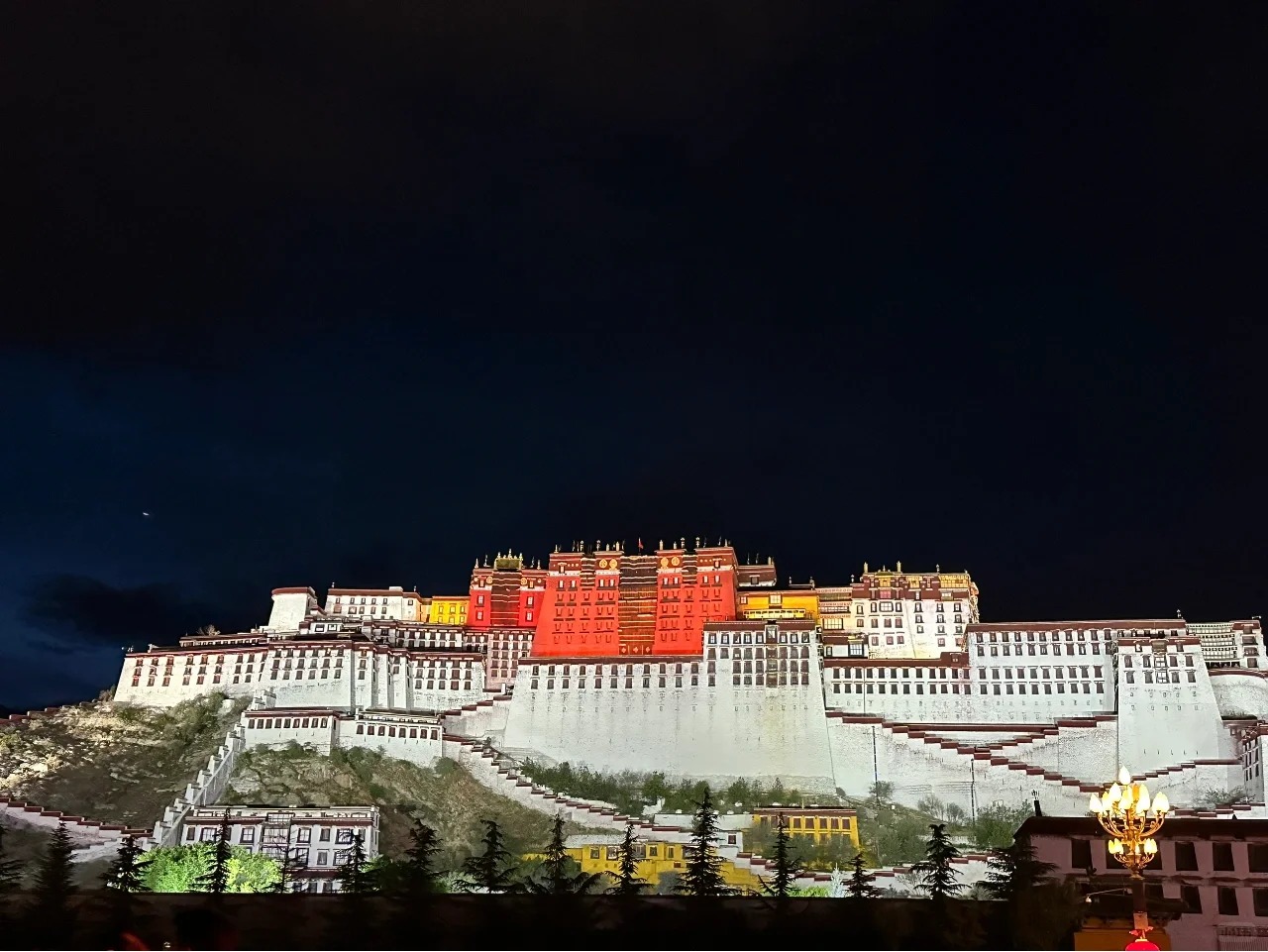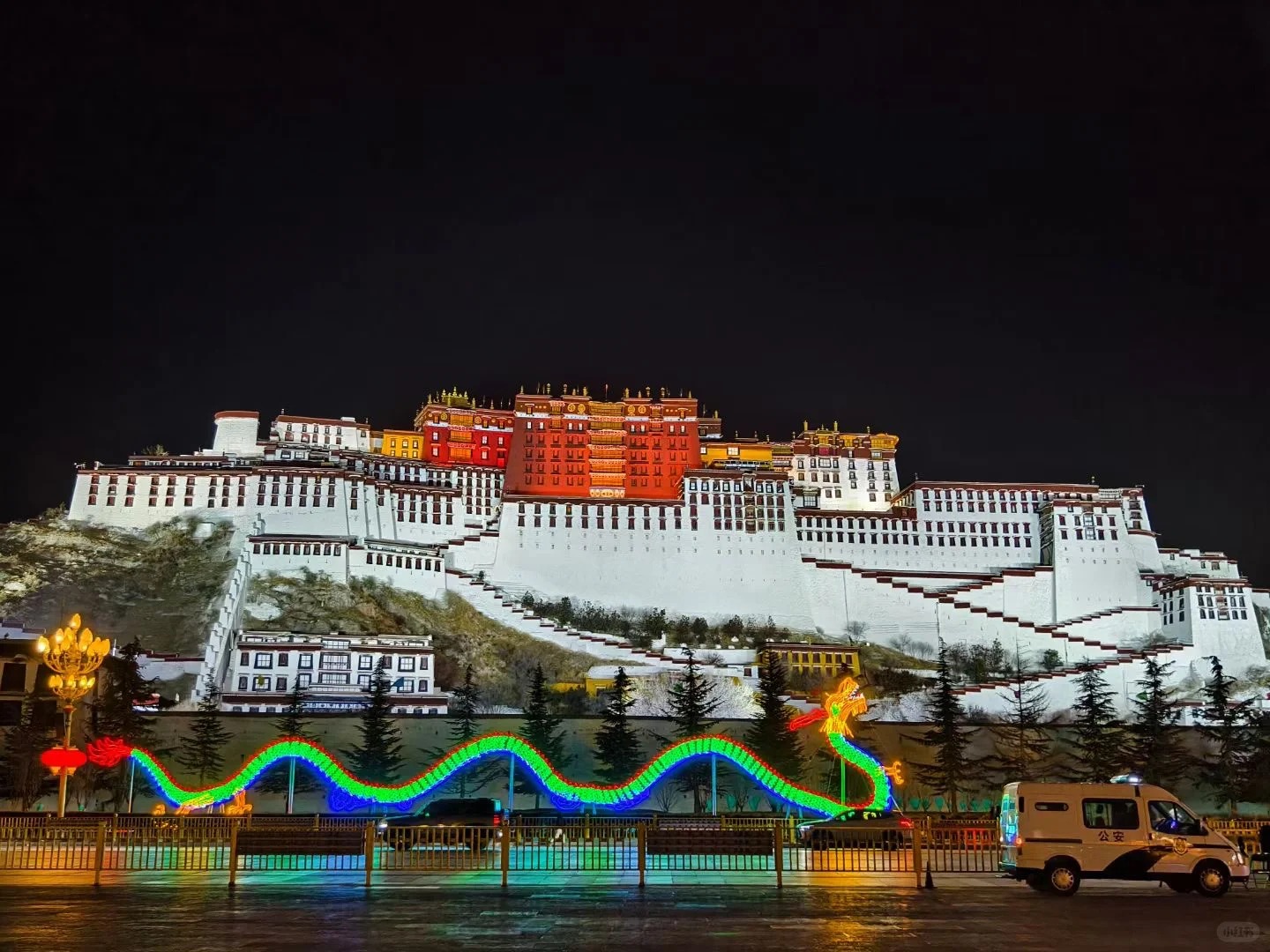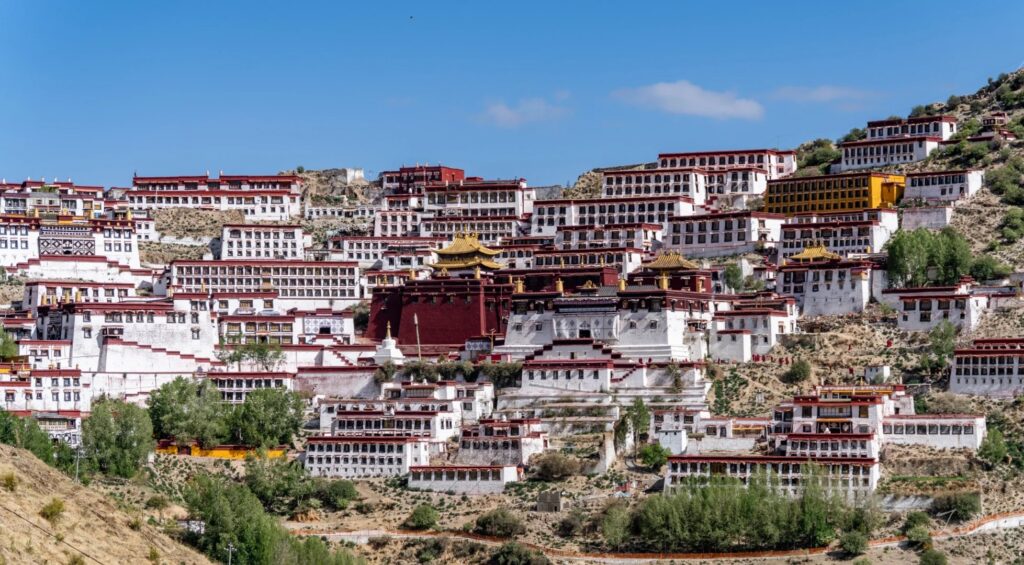Visiting Information
| Information | Details |
|---|---|
| Chinese Name | 布达拉宫 (Bùdálā Gōng) |
| Location and Address | 35 Beijing Middle Road, Chengguan District, Lhasa, Tibet Autonomous Region, China |
| Opening Time/Hours | 9:30 AM – 3:00 PM (May to October), 9:30 AM – 2:00 PM (November to April) |
| Entrance Fee | 200 CNY (May to October), 100 CNY (November to April) |
| How to Get There | By Bus: Take bus 17, 24, or Tourist Bus 1 to Potala Palace stop By Taxi: Available from anywhere in Lhasa, about 15-20 minutes from city center (No metro service available in Lhasa) |
| Best Time for Visit | May to October, with June to August being peak season |
| Contact Info | +86 891 6832221, no official email available |
Overview
The Potala Palace, located in Lhasa, Tibet Autonomous Region, China, is an architectural marvel and symbol of Tibetan Buddhism. Perched atop Marpo Ri hill, 3,700 meters above sea level, this UNESCO World Heritage site served as the winter palace of the Dalai Lamas from 1649 to 1959. The palace is renowned for its imposing structure, rich history, and invaluable collection of Tibetan art and artifacts.
Historical Background
The Potala Palace was first constructed in the 7th century AD by Tibetan king Songtsen Gampo. It was later expanded and rebuilt in the 17th century by the 5th Dalai Lama, Lozang Gyatso. The palace served as the seat of Tibetan government and the main residence of the Dalai Lama until the 14th Dalai Lama fled to India in 1959. Since then, it has been maintained as a state museum and continues to be a significant pilgrimage site for Tibetan Buddhists.

Architectural Features
- White Palace (Karpo Podrang): The eastern part of the Potala Palace, the White Palace served as the living quarters of the Dalai Lama and housed the offices of the Tibetan government. It features a distinctive white exterior and contains the palace’s reception hall, living quarters, and assembly halls.
- Red Palace (Marpo Podrang): The central and western part of the complex, the Red Palace is devoted to religious study and Buddhist prayer. It contains various chapels, libraries, and shrines. The walls are painted deep red, symbolizing power and authority.
- Golden Roof Group: The most iconic feature of the Potala Palace, the Golden Roof Group consists of gilded bronze tiles that crown the central Red Palace. These glittering roofs are not only visually stunning but also symbolize the radiance of Buddhist teachings.
Cultural Importance
The Potala Palace holds immense cultural and spiritual significance for Tibetan Buddhists and is a symbol of Tibetan culture and identity. It houses numerous artifacts, sculptures, murals, and religious objects that showcase the rich artistic and spiritual traditions of Tibet. The palace is also a testament to Tibetan architecture and engineering, demonstrating advanced building techniques that have allowed it to withstand centuries in a challenging high-altitude environment. As a former seat of government and spiritual center, the Potala Palace embodies the historical union of political and religious power in Tibet.
Surrounding Attractions
- Jokhang Temple: Located in the heart of old Lhasa, about 2 kilometers from the Potala Palace, Jokhang Temple is considered the spiritual heart of Tibet. Built in the 7th century, it houses a famous statue of the Buddha and is surrounded by the bustling Barkhor Street, a popular pilgrimage circuit.
- Norbulingka: Situated about 3 kilometers west of the Potala Palace, Norbulingka was the summer palace of the Dalai Lamas. It features beautiful gardens, palaces, and pavilions, showcasing a different aspect of Tibetan royal life and architecture.
- Sera Monastery: Located about 5 kilometers north of the Potala Palace, Sera Monastery is one of the “great three” Gelug university monasteries of Tibet. It’s famous for its debating monks and offers visitors a chance to witness traditional Tibetan Buddhist debates.

Photography Opportunities
- Chakpori Hill Viewpoint: Located southwest of the Potala Palace, Chakpori Hill offers one of the best views of the palace, especially during sunrise and sunset. From this vantage point, photographers can capture the entire palace complex with the mountains in the background.
- Potala Square: The large square in front of the Potala Palace provides an excellent opportunity to photograph the palace’s imposing facade. The square’s fountains and flags add interesting foreground elements to compositions.
- Interior Courtyards and Halls: While photography is restricted in many interior areas, some parts of the palace allow photography. The intricate murals, golden statues, and ornate decorations inside the palace offer unique photographic subjects that capture the essence of Tibetan Buddhist art and architecture.
Modern Importance
- Cultural Preservation: The Potala Palace serves as a crucial site for the preservation of Tibetan culture, art, and history. Its maintenance and restoration efforts are vital in safeguarding Tibet’s cultural heritage for future generations.
- Tourism and Economy: As one of Tibet’s most famous landmarks, the Potala Palace plays a significant role in the region’s tourism industry. It attracts visitors from around the world, contributing substantially to the local economy and providing employment opportunities.
- Educational Value: The palace functions as a museum, offering valuable insights into Tibetan history, religion, and culture. It serves as an educational resource for both local Tibetans and international visitors, promoting understanding of Tibet’s unique heritage.

FAQ
- What is The Potala Palace famous for?
The Potala Palace is famous for its stunning architecture, historical significance as the former residence of the Dalai Lamas, and its rich collection of Tibetan art and artifacts. It’s also renowned for its impressive location atop Marpo Ri hill and its status as a UNESCO World Heritage site. - What’s inside The Potala Palace?
Inside The Potala Palace, visitors can find numerous halls, chapels, and living quarters. It houses countless Buddhist scriptures, murals, paintings, and statues. The palace also contains the tombs of several Dalai Lamas and historical Tibetan relics. - Is The Potala Palace free?
No, The Potala Palace is not free to visit. There is an entrance fee that varies depending on the season: 200 CNY from May to October, and 100 CNY from November to April. - Is The Potala Palace worth visiting?
Yes, The Potala Palace is definitely worth visiting. It offers unparalleled insights into Tibetan history, culture, and Buddhism. Its architectural grandeur and the breathtaking views it offers make it a must-see attraction in Lhasa. - What to do in The Potala Palace?
Visitors can explore the various halls and chapels, admire the ancient murals and statues, learn about Tibetan history and Buddhism, visit the tombs of past Dalai Lamas, and enjoy panoramic views of Lhasa from the palace’s vantage point. - How do I get to The Potala Palace in the local city?
In Lhasa, you can reach The Potala Palace by taking bus 17, 24, or Tourist Bus 1 to the Potala Palace stop. Taxis are also readily available from anywhere in the city and take about 15-20 minutes from the city center. - How to visit The Potala Palace?
To visit The Potala Palace, you need to book tickets in advance, as there’s a daily limit on visitors. Arrive at your designated time slot, bring your passport for identification, and be prepared for security checks. The palace involves climbing many stairs, so wear comfortable shoes and be prepared for the high altitude. Guided tours are available and recommended to fully understand the palace’s significance. Photography is restricted in many areas, so check the rules before taking pictures. It’s advisable to spend at least 1-2 hours exploring the palace.





